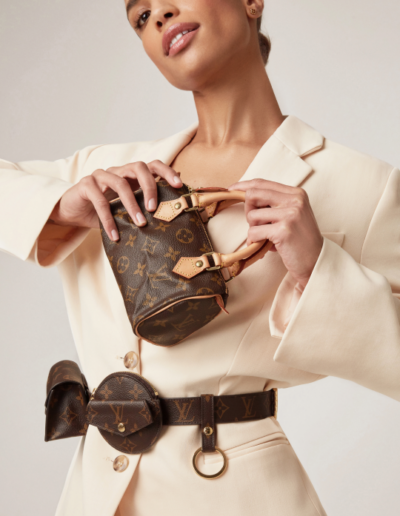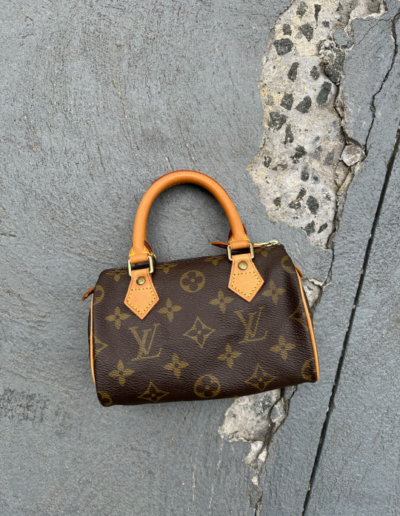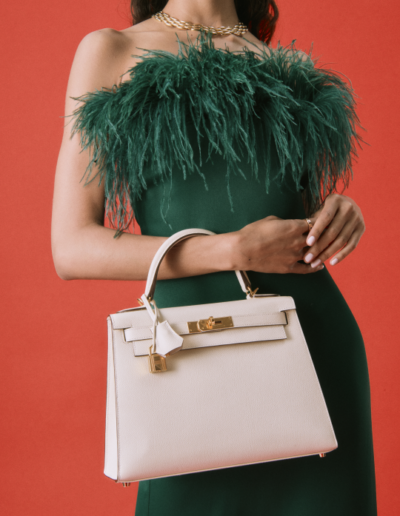DESIGNER 101
Stella McCartney 101:
A History
By Taylor M. Nov 10, 2020
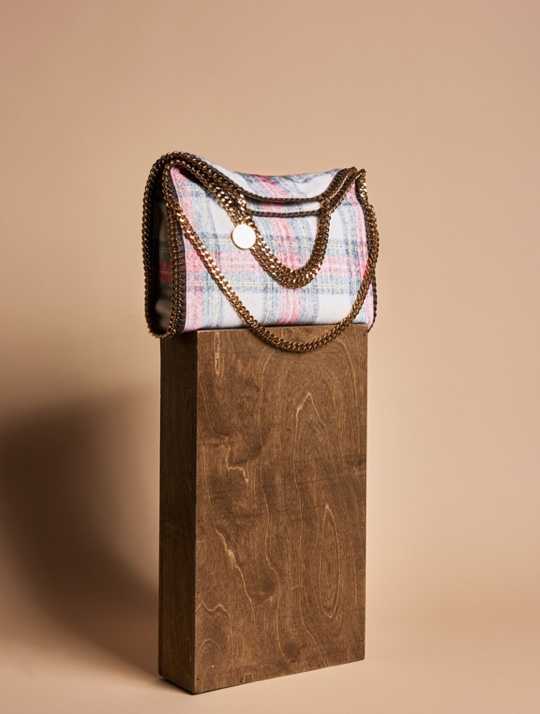
One of the biggest and youngest names in fashion, Stella
McCartney entered the design world with a boost from her famous parents. Using her privilege, successful products, and passions to fight for animals and the environment, McCartney has created an “it” brand that stands on a foundation of conscious consumption rather than status.
Starting her career designing for Chloé, the brand that pioneered ready-to-wear, and a little help from famous female muses, McCartney has established a cult following and gained a global reputation for her animal-free fashion.
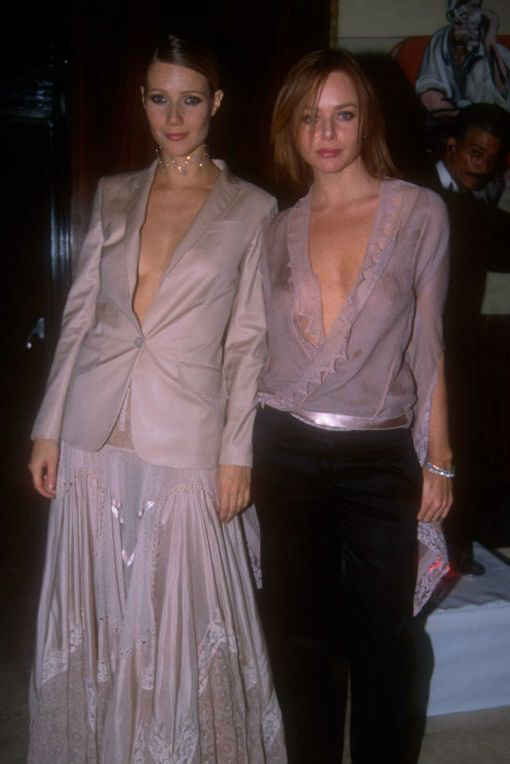
McCartney with muse Gwyneth Paltrow, courtesy of CR Fashion Book
Early Influence
Stella McCartney was born in 1972 to the world-famous Paul and Linda McCartney. She was quite literally a product of the arts, and this has remained apparent throughout her life to date. Her father, Paul McCartney of The Beatles, is one of the most iconic musicians of all time, and his late wife was a well-known photographer and activist. Throughout her youth, Stella was inspired by her parents’ eclectic and free sense of style while traveling with her father’s band, Wings. In lieu of her early affinity for apparel, it is said that she was fashioning her own clothing by the age of thirteen. Her drive was evident as she later obtained a handful of impressive internships at Christian Lacroix and British Vogue.

McCartney with her parents, courtesy of Stella McCartney
When she went off to college, the social circle McCartney ran in reflected her artsy upbringing. Impactful friends and muses appeared in Stella’s show at Central Saint Martins College of Art & Design. Walking in the young designer’s final graduation presentation were Naomi Campbell, Yasmin Le Bon, and Kate Moss. The show was something of a spectacle. McCartney’s father prepared a song just for the event and the front row was lined with her sparkling connections including Twiggy, Jude Law, and of course her parents.
After her final show at university yielded instant victory (it was promptly stocked in retailers including Neiman Marcus, Joseph, Browns, and Bergdorf Goodman), McCartney worked under a tailor from Savile Row. Learning from Edward Sexton, she honed in on her skills in creating simplistic but structured garments.
McCartney at Chloé
Women designing for women was not a strange concept to Chloé, a fashion house founded on fuss-free womenswear. As the first purveyor of pret-a-porter, Gaby Aghion’s legacy is only passed down to designers equipped with a cognizance of the French-girl brand’s allegiance to wearability & whimsy. Freshly graduated in 1997, McCartney took on the head design role at Chloé, following Karl Lagerfeld and Martine Sitbon. Although Lagerfeld expressed initial apprehension, Stella’s mass success at Chloé is remembered by a certain tom-boy playfulness that perfectly melted into the airy aesthetic of the label.
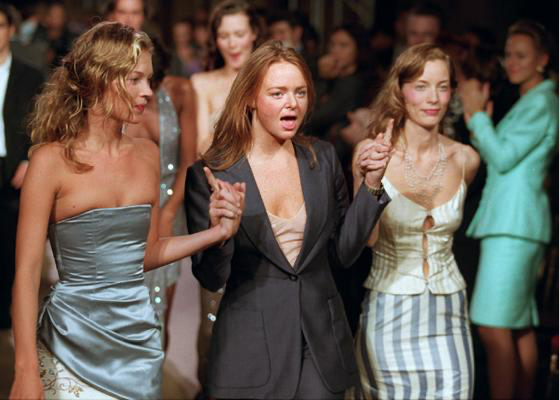
Stella with Kate Moss at Chloé Show, courtesy of Reuters
Partnerships & Expansion
Leaving her trusted assistant Phoebe Philo to take the reins at Chloé, McCartney set out to manifest her own self-named brand with the help of the then Gucci Group, which is now under Kering. In April of 2001, the joint venture was announced and the first show premiered in the following October’s Paris Fashion Week. McCartney’s design philosophy stood in such contrast to the Gucci leather goods DNA due to her outright refusal to use animal furs and skins. That being said, McCartney expressed hopes for a bright future stating, “I have found a partner with the skills necessary to make this business a success.” In 2018, Stella became the sole proprietor of her brand after obtaining the other fifty percent stake from Kering. Nevertheless, in 2019 she partnered with LVMH, maintaining the controlling stake in her company.
Animal Rights & Sustainability

Stella McCartney holds a “No Fur” picket sign, source unknown
In 2019, Stella told Vogue Business, “Killing animals is the most destructive thing you can do in the fashion industry…the minute you’re not killing an animal to make a shoe or a bag you are ahead of the game,” which has been her stance for more than a decade. It is obvious that the ideals of her powerful and outspoken mother were something she was raised on and remain a core component of her moral code. When Stella negotiated her position at Chloé back in 1997, the rookie designer was immovable on the topic of animal products and despite the executive hesitancy, she was evidently convincing. Already raising skepticism due to her age and elevated upbringing, her enlightened views on the industry predeceased the eminent sustainability and social consciousness that drastically influences consumer preference well into 2020. Critics have argued that her man-made alternatives are an environmental hazard, and in this world where socially conscious companies are beginning to have a slight competitive edge, even in luxury, this raises important questions about corporate intention. McCartney continuously urges, however, that the impact of raising livestock is astronomically worse from an environmental standpoint, not to mention cruel. Much like her mother, McCartney is equipped to both argue and educate, which separates her brand from companies that give empty speeches on sustainability for sales; she has been here the whole time.
When she left Chloé to start her namesake brand with Gucci Group, McCartney viewed the partnership as more of an infiltration as opposed to an alliance. Gucci is a brand that spawned from the luxury market’s demand for fine leathers and exotics, which couldn’t be more of a contrast from her stringent philosophies on fabrications. In McCartney’s eyes, this could allow her to alter the system she opposed from the inside-out. Under the Gucci brand, Alexander McQueen and Saint Laurent stood adjacent to her brand and she hoped to create a ripple effect of change through the organization. Executives were at a loss of words when asked to imagine her success in the absence of the exorbitant skins that dominated high fashion. Nonetheless, Stella McCartney’s sales have appeared to prove her opposition wrong time and time again, dating back to the revival of Chloé and even upon moving to LVMH more recently. There is a reason that the largest luxury conglomerate took her brand on despite its seemingly risky deviation from the norm; it works.
Luxury Bags
When it comes to bags, the Stella McCartney approach is unrivaled. No other luxury brand with such an audience holds the same ideal that clean construction and intentional design can prove the common conception that “genuine” leather is the superior material wrong. Stella McCartney handbags, such as the best-selling Falabella, have become a major part of the street-style circle. The bag now sits among high-profile purses that are highly copied. The materials for the bag are man-made, but the recycled polyester suedes (ECONYL) are often mistaken for genuine leather. ECONYL is a synthetic material developed in 2011 that is made using landfill and ocean scrap. To further the focus on sustainability, this bag also has a jacquard lining derived from recycled water bottles.
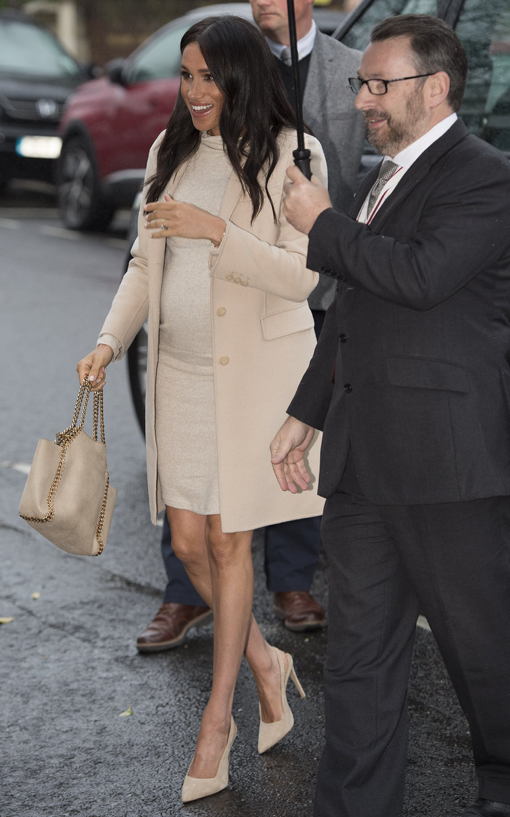
Meghan Markle carrying a Falabella bag, source unknown
It’s clear that one of the most individual approaches to high fashion production to-date comes from the Stella McCartney brand. Committed to both quality and ethics, the brand stands out among big names in luxury while holding a strong presence among them. She once told Suzy Menkes, “…Leather is a big conversation, people’s businesses are based on leather and I’m going to try and show everyone that you can have a business in fashion, and you don’t have to associate luxury with leather or kill animals anymore.” Based on the vast success of her designs and her long-time tenure for working to solve animal and environmental issues, it can only be expected that the brand will continue to be among those standing at the forefront of innovation in the fashion industry.

